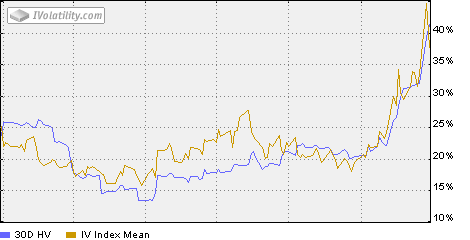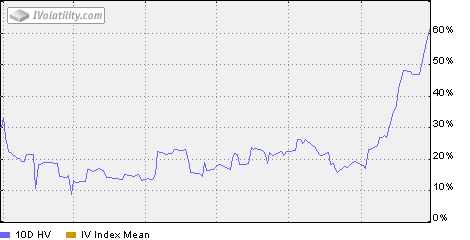So have options officially become untradable? I mean volatility is in the stratosphere. But what’s the right play. Do you buy on balance? We had a 1000 point range Friday. A 70 VIX world still doesn’t price that in.
Do you close your eyes and sell? At some point this has to break, or settle in, or something.
Truth is, there’s really no right answer. It’s pretty obvious there’s a lot of air in options prices right now, meaning if we get a wisp of sustained rally, we’re going to see the VIX drop 10-20 points in a blink. But that doesn’t mean you sell and cross your fingers, as after all the event that gets volatility lower is likely a huge rally. Meaning those straddles/strangles you sell to play for a volatility implosion may now have risen so much intrinsically that the option drop is moot.
Basically, you have to look at October options in cash, rather than volatility terms, at this point. They’re all going to be stock or wallpaper in a few days. Before you sell something, consider where the stock has to go before you lose, and think about the likelihood. Remembering some share prices on the board now probably seemed utterly absurd a week or two ago. That Bloomberg article the other day had some guy crowing about his sale in GS Oct 80 puts. Hopefully for his sake he covered them, as I think they got up to like $12 Friday.
Remember also that volatility into expiration week tends to beget volatility ON expiration week. It’s almost a self-fulfilling prophecy as options shorts were certainly the one’s squeezed this cycle. To say the least.
Comments »

